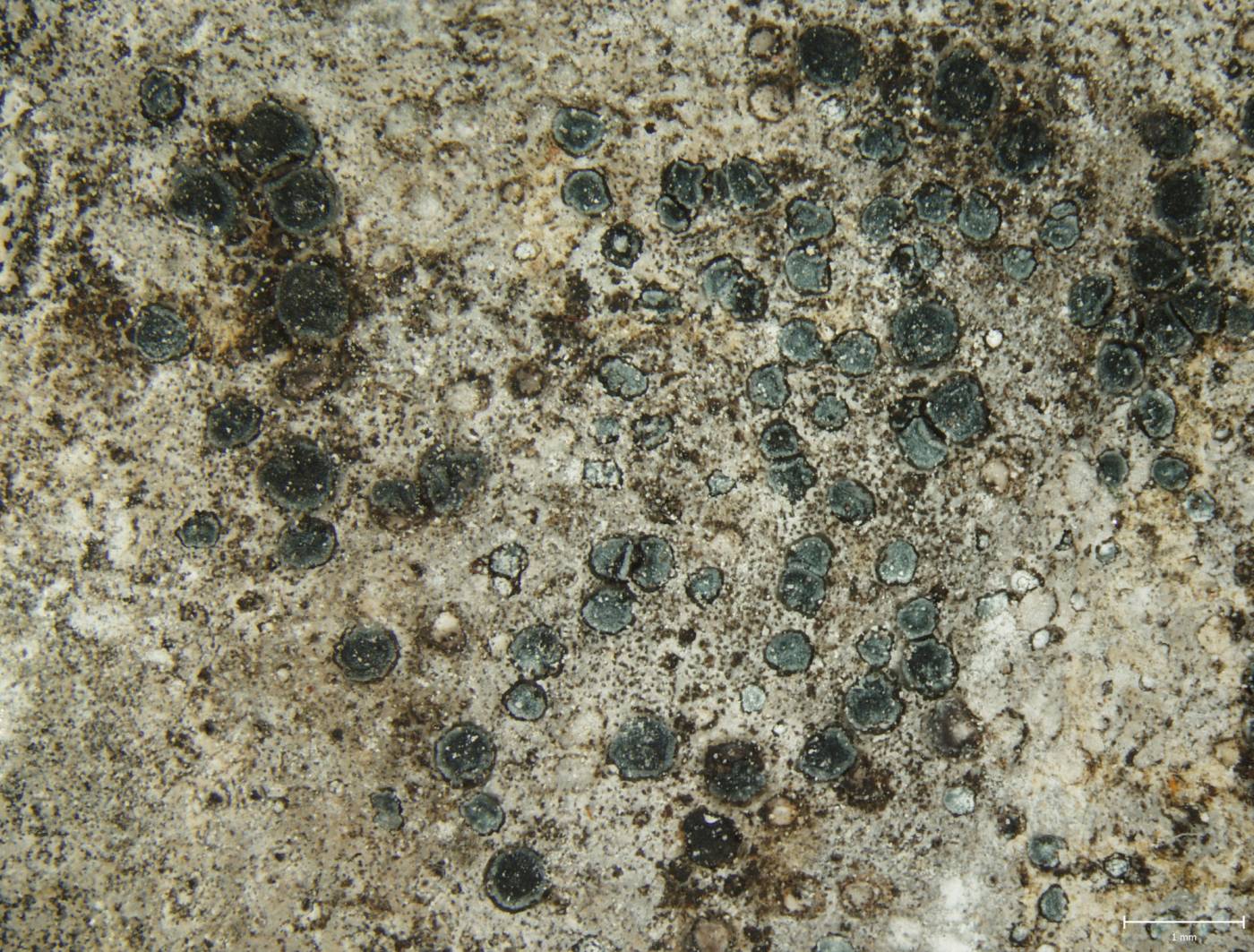A small species, currently belonging to the genus Pyrenodesmia. It has dark grey to black apothecia (without anthraquinones), endolithic thallus and it is linked to limestones. It differs from a similar C. albopruinosa by the absence of oil droplets in the hymenium and by smaller fruiting bodies (about 0.2 mm in diam.) with a well-developed exciple. In the Czech Republic, the species is known only from the Pálava Hills (Malíček & Vondrák 2018). In the Bohemian Karst, the Moravian Karst and Pálava, there is another close species with larger fruiting bodies and a thin epilithic thallus, which can be called C. alociza sensu lato.
Today, based on the results of the taxonomic research by Ivan Frolov, we use the name C. alociza for the taxon „*C. erodens* non-sorediate “, presented in Frolov et al. (2016). Thus, we use the name for a different taxon than Muggia et al. (2008), whose C. alociza corresponds in our concept to the species C. albopruinosa (see commentary on C. albopruinosa).
Literature: Frolov I., Vondrák J., Fernández-Mendoza F., Wilk K., Khodosovtsev A. & Halıcı M.G. (2016): Three new, seemingly-cryptic species in the lichen genus Caloplaca (Teloschistaceae) distinguished in two-phase phenotype evaluation. – Annales Botanici Fennici 53: 243–262. Malíček J. & Vondrák J. (2018): Příspěvek k diverzitě lišejníků NPR Děvín a Tabulová v CHKO Pálava. – Bryonora 61: 1–17. Muggia L., Grube M. & Tretiach M. (2008): A combined molecular and morphological approach to species delimitation in black-fruited, endolithic Caloplaca: high genetic and low morphological diversity. – Mycological Research 112: 36–49.
taxonomic classification:Ascomycota → Lecanoromycetes → Teloschistales → Teloschistaceae → Caloplaca
most frequented synonyms:Pyrenodesmia alocizaRed List (Liška & Palice 2010):DD – data deficient
Red List (Malíček 2023):C1 – critically endangered
Occurrence in the Czech Republic
All records: 5, confirmed 2. One click on a selected square displays particular record(s), including their source(s).

